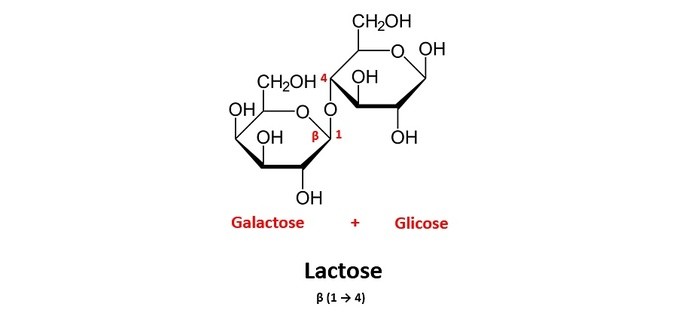Disaccharides are carbohydrates formed by the combination of two monosaccharides through a glycosidic bond.
These organic compounds are formed by molecules of carbon, hydrogen and oxygen. Its main characteristics are the sweet taste and the solubility in water and, therefore, they are widely used as sweeteners.
Check out the most well-known disaccharides and the foods in which they are found:
- Sucrose (glucose + fructose): extracted from sugar cane;
- Lactose (glucose + galactose): present in milk;
- Maltose (glucose + glucose): found in barley.
Glycosidic linkage and the structure of disaccharides
The union of two monosaccharides occurs through a glycosidic bond. This covalent bond is formed with the loss of a hydrogen atom from one of the monosaccharides and the exit of a hydroxyl radical from the other.
With the exit of hydrogen and hydroxyl, a water molecule is formed. Therefore, it can be said that a disaccharide is formed in a synthesis by dehydration.

Maltose, for example, has a glycosidic bond between carbon 1 and carbon 4 of its monosaccharides.
The glycosidic bond can be classified as alpha or beta depending on the position of the hydroxyl radical that will participate in the bond.
In the case of maltose, the bond is alpha, because the hydroxyl is on the right side of the anomeric carbon, which is the carbon bound to the central oxygen. If the hydroxyl were on the left side we would have a beta bond.
Examples of disaccharides
The three most well-known disaccharides are: sucrose, maltose and lactose. When consumed, the organism breaks the glycosidic bond of the disaccharides and releases their monomers, which are absorbed and used as an energy source.
Sucrose
This disaccharide with a characteristic sweet taste is a common sugar in vegetables, extracted mainly from sugar cane and beet to make table sugar.

Because it is quickly absorbed by the body, it is an immediate energy source. The action of the invertase enzyme causes the glucose and fructose monosaccharides to be released through hydrolysis.
Maltose
Malt is a grain with a high concentration of maltose. During digestion, maltose is also released by breaking down the starch polysaccharide.

Maltose is a reducing sugar, because in its structure there is a reducing end and, therefore, it can be oxidized. These compounds have a free aldehyde or ketone group.
Lactose
It is found in milk and its derivatives. It is a reducing sugar and less sweet. Their percentage in human milk can vary between 5-8% and in cow’s milk by 4-5%.

Lactase is the enzyme responsible for breaking down lactose. Lactose intolerance is related to the absence of this enzyme in the intestine, either at birth or stop producing it over time.
Carbohydrates: difference between monosaccharides, oligosaccharides and polysaccharides
The carbohydrates , also called carbohydrates are mainly differentiated by the complexity of the chain. See below how this classification occurs.
Monosaccharides : these are the simplest carbohydrates, which may have the organic function aldehyde (CHO) or ketone (C = O).
They are classified according to the number of carbons present in the chain, for example, triosis (3C), tetrose (4C), pentose (5C) and hexose (6C).
Oligosaccharides : are the intermediate chain carbohydrates, formed by the connection of at least two identical or different monosaccharides.
Although disaccharides and trisaccharides are the best known molecules in this class, the structure of these compounds can vary from 2 to 10 monosaccharides.
Polysaccharides : are long-chain carbohydrates. These macromolecules are polymers, whose forming unit is the monosaccharide.
The most well-known polysaccharides are: starch, plant energy reserve, glycogen, animal energy reserve and cellulose, a component of the plant cell wall.
